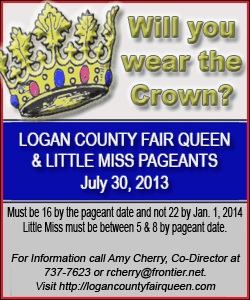|
 HOW RAMPANT WAS DOPING? In Lance Armstrong's era, from the late 1990s to mid-2000s, clean riders were the minority. Armstrong, when he finally confessed this January, told Oprah Winfrey doping was "part of the job." Anti-doping scientists estimated as many as 4 out of 5 riders in cycling's grand tours of France, Italy and Spain were cheating. This month, an investigation led by Dutch former justice minister Winnie Sorgdrager concluded that "the vast majority of the peloton, including Dutch riders, embraced doping" in the Armstrong era, "80, 90, maybe even 95 percent is in our view close to the reality." HOW RAMPANT WAS DOPING? In Lance Armstrong's era, from the late 1990s to mid-2000s, clean riders were the minority. Armstrong, when he finally confessed this January, told Oprah Winfrey doping was "part of the job." Anti-doping scientists estimated as many as 4 out of 5 riders in cycling's grand tours of France, Italy and Spain were cheating. This month, an investigation led by Dutch former justice minister Winnie Sorgdrager concluded that "the vast majority of the peloton, including Dutch riders, embraced doping" in the Armstrong era, "80, 90, maybe even 95 percent is in our view close to the reality."
___
WHY? Because the drug of choice, erythropoietin or EPO, was undetectable and greatly boosted performance. Armstrong teammate Tyler Hamilton says they nicknamed the injectable blood-boosting hormone "Edgar" or "Poe," after novelist Edgar Allan Poe, and that Armstrong kept vials of the stuff in his fridge.
"You could take tons of EPO but you knew that you will be negative," Mario Zorzoli, scientific adviser to the UCI, cycling's governing body, said in an interview before this Tour. The chances of getting caught for any drug were, at the end of the 1990s, "very, very, very, very scarce," he added.

The UCI introduced a urine test for EPO in April 2001 -- and caught nine riders with 271 EPO tests that year alone. But it never caught Armstrong.
___
HOW WIDESPREAD IS DOPING NOW? That is cycling's $7.6 million dollar question. Professional teams, riders, race organizers and the UCI forked out that amount in 2012 to fund the sport's drug-testing program which is now far more rigorous, extensive and credible than when Armstrong was crushing all and sundry at the Tour from 1999-2005.
Tour riders are tested more than in other sports and monitored by a pioneering "biological passport" that scrutinizes their blood readings for tale-tale signs of doping. The UCI insists cycling's drug culture is being broken. There are multiple signs to suggest that is true, but also that it hasn't yet been definitively beaten.
"For sure we can say that things have changed a lot in the last 10-15 years," said Zorzoli.
___
DOES TESTING WORK? Kind of. Across all sports, drug tests aren't as effective as one might think or hope. According to the World Anti-Doping Agency, less than 1 percent of 250,000 tests undertaken annually in sports are positive for performance enhancers, a statistic it said hasn't improved in three decades, despite leaps in testing science and increased testing. That suggests doped athletes are staying one or several steps ahead of those meant to catch them, that they avoid tests, use hard-to-detect substances and methods, and that testing isn't as organized and effective as it could or needs to be.
___
ANY RECENT SUCCESSES? Absolutely. In May at Italy's grand tour, the Giro d'Italia, Mauro Santambrogio and Danilo Di Luca tested positive for EPO. 2007 Giro winner Di Luca faces a lifetime ban for his third offense. Their Vini Fantini team isn't at this Tour. Alexander Serebryakov also was positive for EPO in a test in March. Another Russian, Nikita Novikov, tested positive for a muscle-building drug in May. Their respective teams -- Euskaltel-Euskadi and Vacansoleil -- are among the 22 competing in this Tour.
___

[to top of second column] |

WHY ARE THERE STILL CASES? Because, as in other sports, there are still cheats and because, unlike some other sports, cycling actively hunts them. Tennis, American football and the NBA, to name just those few, do not test their athletes as much or as invasively as elite pro cycling. So are sports that rarely catch dopers cleaner or simply turning a blind eye?
"You only find what you look for," Tour director Christian Prudhomme noted in an interview. "Cycling is no longer the ugly duckling. It's not true."
___
DO CYCLING TEAMS CARE? Yes, not least because repeated doping scandals scared off some sponsors and have generally prevented the sport from making as much money as it otherwise could.
But some teams care more than others. Of the 22 Tour teams, 14 have demonstrated extra commitment to anti-doping by joining the Movement for Credible Cycling. Its members commit to anti-doping measures more stringent than required by the WADA code. The group's name, in itself, speaks to cycling's uphill battle to restore faith in its athletes and administrators.
___
HOW MIGHT RIDERS STILL BE DOPING? That partly depends on how much money they have and how sneaky their doctors are. Sophisticated and well-advised cheats are better at evading tests than dopey dopers muddling along with banned performance-enhancers by themselves. Small doses of commonly abused drugs flush out quickly from the body, meaning testers don't detect them unless they are lucky or smart enough to collect samples at just the right time. Small doses of EPO remain tough to detect. A small blood transfusion also could slip past undetected.
But some anti-doping experts believe such 'micro-doses' might not provide much of a performance boost.

"Micro-doses have potentially less effect," said Zorzoli. "Making the assumption that just taking micro-doses you will never be caught, I would not bet on that if I was an athlete."
___
WHAT ELSE COULD BE DONE? Arguably, what cycling needs most is not to ramp-up testing even further but a truth and reconciliation process that would allow the sport to unearth all of the doping skeletons in its closet, once and for all, so cycling fans, sponsors and riders could then focus wholly on the present and less on the past. As it is, the sport's strides continue to be overshadowed by a constant drip-drip-drip of doping confessions and revelations from the Armstrong years. In France, the run-up to this Tour was dominated by media reports that EPO was detected in a urine sample that French rider and now broadcaster Laurent Jalabert provided at the race way back in ... 1998. This blast from the past infuriated five-time Tour champion Bernard Hinault, who works for the race organizers.
"That was 15 years ago. We have to stop unearthing the dead," the website of sports daily L'Equipe quoted him as saying. "There's nothing new in saying that at the end of the '90s and the start of the 2000s, there was an extremely dark period in cycling. We know that. Cycling cheated, perhaps more than the others, but today it is no different from the others."
___
SO IS CYCLING WORTH WATCHING? One could ask that of any sport. Doping isn't unique to cycling.
[Associated
Press; By JOHN LEICESTER]
Copyright 2013 The Associated
Press. All rights reserved. This material may not be published,
broadcast, rewritten or redistributed.
|